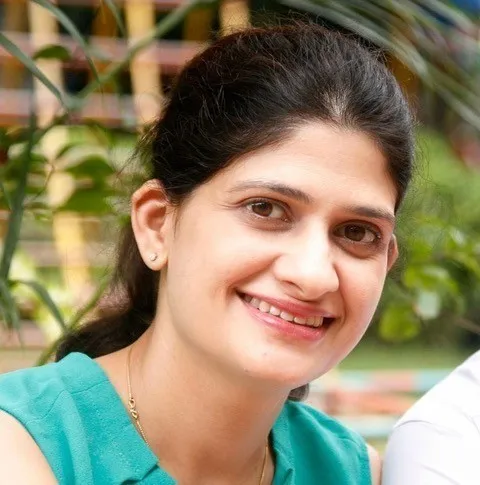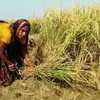This New York organisation is empowering low-income women in India through financial inclusion
Women’s World Banking is helping over 22 million women clients in India achieve financial independence. It aims to serve eight million more women by 2022.
In the first UN World Conference on Women — held in Mexico City in 1975 — a group of women discussed the idea of financial independence for women and how it could give them control over their own lives.
At the time, this was almost a dream for many women, even in the United States, who started owning a credit card, thanks to the Credit Opportunity Act of 1974.
In a bid to make women more financially independent, three women — Michaela Walsh, Merrill Lynch, US; Ela Bhatt, Self-Employed Women’s Association (SEWA), India; and Esther Ocloo, a Ghanaian entrepreneur and women’s development advocate — founded Women’s World Banking (WWB) in 1976.
WWB strongly believes financial inclusion is the key to driving economic empowerment for women, and through them, their communities. And the issue is as important now as it was in 1976.
In an interaction with SocialStory, Pallavi Tewari-Madhok, Director Advisory Services, WWB - India, says,
“Women, when allowed to participate equally in their economies, drive growth. They not only invest in themselves and their businesses but also in their families and communities. For the past 40 years, we have been working across a number of developing countries, powering those economies by investing in women, both as customers and as leaders.”

Pallavi Tewari-Madhok
With a global reach in 28 countries with 51 partners, WWB provides scalable, market-driven solutions to over 67 million women clients. “Our direct beneficiaries are low-income women, girls, and youth in developing countries, but indirectly, everyone benefits,” Pallavi says.
By 2022, the New York-headquartered organisation plans to scale its operations and reach at least eight million more un/underserved women in India.
Women driving financial growth
The lack of access to financial services worsens a woman’s condition in society. They risk falling into poverty and getting marginalised. In fact, it doesn’t allow them to fully engage in productive economic activities.
WWB seeks to drive economic growth around the world by investing in women. It focusses on expanding the economic assets, participation, and power of low-income women and their households by helping them access financial services, knowledge, and markets effectively.
WWB achieves this through research around financial inclusion, influencing policymakers to implement initiatives necessary to support women, investing in women-focused institutions to support gender diversity, and by delivering strong leadership programmes to enhance the capabilities of women leaders.
“Women are vital to economic recovery and growth. They are business owners, entrepreneurs, educators, and manufacturers. When given access to the tools they need to participate equally in their economies, these economies have a massive potential to thrive,” says Pallavi.
According to a McKinsey report, if women were to have economic parity with men by 2025, it would boost the global GDP by up to $28 trillion — the size of both the US and China's GDPs combined.
Creating financial stability and inclusion in India
The 45-year-old institution started its operations in India only about two years back in 2018. Over the past few years, India has pushed out numerous government schemes for financial inclusion, including the Pradhan Mantri Jan Dhan Yojana (PMJDY). In fact, many small and new financial service platforms are reaching out to underbanked women customers.
Despite this, India posses a massive market opportunity to serve nearly 278 million underbanked women, which is why the country is among WWB’s Tier I priority markets, explains Pallavi. At present, WWB caters to nearly 22 million women in India, which includes low-income women, women SHGs, and women enterprises.
“WWB is partnering directly with financial service providers — small finance banks, public sector banks, and payment banks — to design women-centred products, and improve product penetration within the Jan Dhan segment,” she says.
Currently, it is working to build the resilience of urban low-income women by nudging them to start saving in their Jan Dhan accounts through the PMJDY scheme.

One of the customers of Ujjivan Small Finance Bank.
Nisha, a PMJDY customer in Mumbai, says, “I mostly used to make payments in the Beesi (chit fund) with my neighbours. I liked the scheme, and they offered me a loan. So, I made deposits in April, May, June, and July.”
For Khusboo, another PMJDY customer, WWB helped change her notion about banking and savings. She says, “I think that money should be saved in the bank account only. If you save the money in your account once, then you won't feel like withdrawing the money. I feel that a bank account is a safe option for me; it is right for me.”
In India, WWB is present across Mumbai, Delhi, and Chennai, and operates through a network of seven financial service providers (FSPs), including public sector banks, payments banks, small finance banks, fintech companies, and non-governmental microfinance institutions. These include Ananya Finance, FWWB, SEWA Bank, Ujjivan Small Finance Bank, Bank of Baroda, Kaleidofin, and Frontier Market.
It has also forged three partnerships in India supported by the Visa Foundation and the Michael & Susan Dell Foundation (MSDF) with the Bank Of Baroda, Ujjivan Small Finance Bank, and FINO Payments Bank.
“This network serves as our local strategic, implementing, and catalysing partners, helping us achieve our mission to reach eight million more un/underserved women by 2022 in India,” Pallavi notes.
To help with its operations, WWB depends on various government and private entities for funding, which includes the Visa Foundation, Bill & Melinda Gates Foundation (BMGF), Australian government, the Swedish International Development Cooperation Agency (SIDA), and several other public donors, corporate foundations, and philanthropic organisations.
In fact, it also raises money from the donations made on its website to support its women empowerment efforts.
“To achieve greater scale, WWB plans to mobilise the FSPs (in the network and beyond) to adopt our proven solutions that match their needs and that of the customers they serve. These efforts could range from publishing in-depth guides, convening hands-on instructional workshops to a light strategic advisory, and providing initial guidance on how to implement solutions while contextualising them to meet each institution’s needs,” she explains.
COVID-19 and financial access
The COVID-19 pandemic provided a much-needed boost to the WWB to work harder than before to help women build personal and financial resilience.
“To this effect, we are expanding access to micro-insurance to build women’s resilience in this time of crisis. We are working with several governments to ensure that their COVID-19 response payments get into the hands of the people that need them most,” Pallavi says.
The organisation is increasing its engagement with its global network of 51 banks, insurance companies, and micro-finance institutions to help them deliver the support that WWB’s women clients need at present.

Representational image
“We also launched the Making Finance Work for Women Fintech Innovation Challenge in partnership with the Monetary Authority of Singapore to shine a light on fintech companies that are developing gender-inclusive solutions to serve low-income women in the wake of COVID-19,” she adds.
Speaking on the future plans, Pallavi says, “Our immediate focus for the next year is on five goals — enhancing our advocacy efforts to influence policymakers; supporting immediate opportunities for COVID-19 relief (G2P, insurance, resilience); growing our leadership and diversity support for regulators; continuing to grow and diversify our network of FSPs, and leading by example in our gender lens investing efforts.”
Edited by Suman Singh








